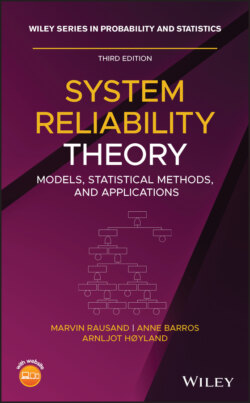Читать книгу System Reliability Theory - Marvin Rausand - Страница 121
Definition 3.1 (Failure of an item)
ОглавлениеThe termination of the ability of an item to perform as required.
The following comments to Definition 3.1 may be given:
1 Definition 3.1 is mainly a rephrasing of IEV's definition of a failure: “loss of ability to perform as required” (IEV 192‐03‐01), but the expression “loss of ” is replaced with the expression “the termination of” to make it even more clear that a failure is an event that takes place at a certain point in time (e.g. at time ).
2 In the context of reliability, the expression “ability to perform as required” does not imply that all aspects of the item are perfect, but that the item must be able to perform the functions that are required for a given purpose.
3 The item may deteriorate as a slow process. Failure occurs when a required function no longer fulfills its performance requirements, and it may not be any significant change in performance when the threshold is passed, as shown in Example 3.2.
4 One user may interpret “as required” different from another user. A failure that is important (and costly) in a warranty context may, for example, be irrelevant in a risk assessment context.The performance requirements for an item are usually available in the item specification document and partly in the user's manuals, but users seldom read the specifications and the complete user's manual.
5 We use the verb fail to express that a failure occurs. When a failure occurs at time , the item fails at time .
A failure may be interpreted as a transition from a functioning state to a failed state, as shown in Figure 3.2. Example 3.2 illustrates that we may not always be able to observe the failure event and the time of the failure.
Figure 3.2 Failure as a transition from a functioning state to a failed state.
